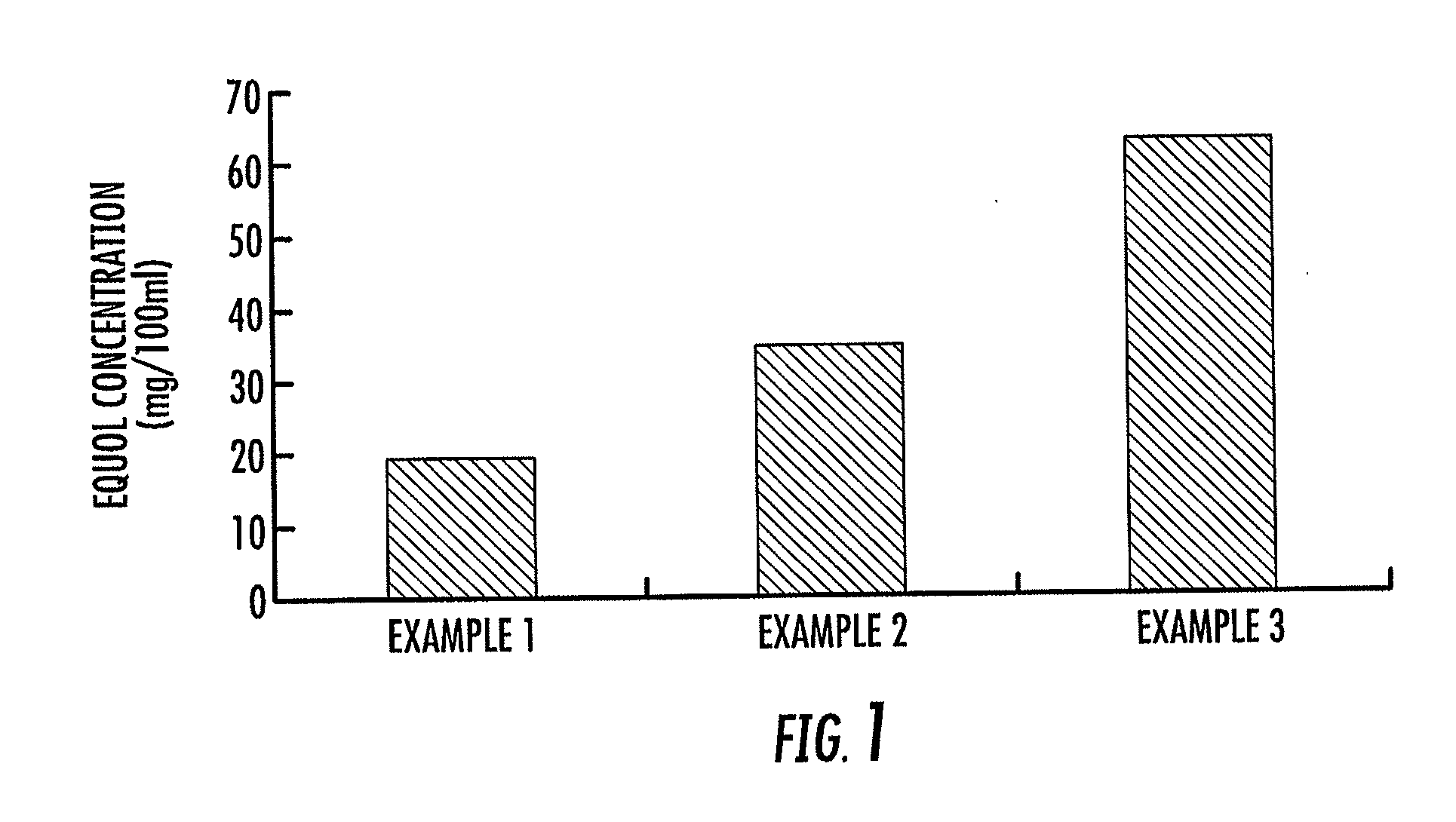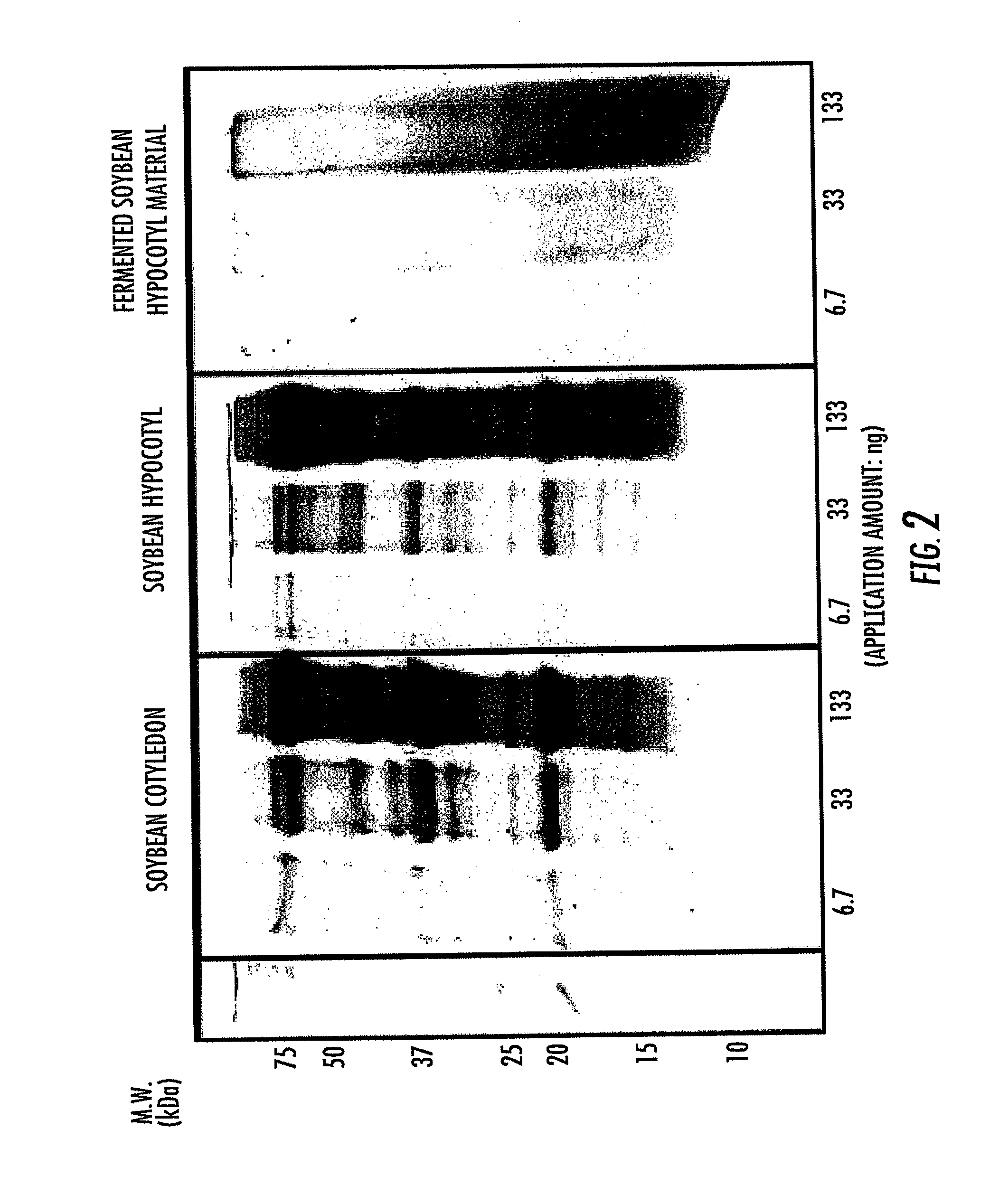Equol-containing fermentation product of soybean embryonic axis, and method for production thereof
a technology of soybean embryonic axis and soybean hypocotyl, which is applied in the field of fermented soybean hypocotyl containing equol, can solve the problems that the desired useful benefits based on the action of equol cannot be sufficiently expected by ingesting the fermented product, and about 50% of japanese are not able to produce equol, etc., to achieve superior equol-derived active physiological effects, reduce the amount of allergen
- Summary
- Abstract
- Description
- Claims
- Application Information
AI Technical Summary
Benefits of technology
Problems solved by technology
Method used
Image
Examples
examples
[0073]The present invention is described in detail with reference to Test Examples, Examples, etc. below, but is not limited to these examples.
examples 1 to 3
[0074]Powdered soybean hypocotyls, arginine, and water were mixed in such a manner that the compositions of the mixture was as shown in Table 1 to prepare soybean hypocotyl solutions. Into 5 ml samples of the soybean hypocotyl solution was inoculated Lactococcus 20-92 (FERN BP-10036; Lactococcus garvieae), and subjected to static cultivation at 37° C. for 96 hours under anaerobic conditions. After cultivation, the resulting culture (fermented liquids) were sterilized by heating at 100° C. for one minute, subsequently dried at 80° C., and further powdered using a homogenizer, thereby obtaining powdered fermented soybean hypocotyl materials.
[0075]Table 1 shows equol concentrations in culture 96 hours after cultivation. Table 1 also shows viable bacterial counts and pH of culture media 96 hours after cultivation, yields of the powdered fermented soybean hypocotyl materials, and equol concentrations in the powdered fermented soybean hypocotyl materials. The results established that ferm...
example 4
[0076]Lactococcus 20-92 (FERN BP-10036; Lactococcus garvieae) was inoculated into 5 ml of a soybean hypocotyl solution containing 10 wt. % of powered soybean hypocotyls and 0.1 wt. % of L-arginine, and subjected to static cultivation at 37° C. for 96 hours under anaerobic conditions. After cultivation, the resulting culture (fermented liquid) was sterilized by heating at 100° C. for one minute, then dried at 80° C., and further powdered using a homogenizer, thereby obtaining a powered fermented soybean hypocotyl material.
[0077]The powdered soybean hypocotyls used as starting materials (referred to as “pre-fermentation” in Tables 2 and 3) and the obtained powdered fermented soybean hypocotyl material (referred to as “post-fermentation” in Tables 2 and 3) were analyzed for compositional components. Table 2 shows the analytical results for soybean isoflavones, and Table 3 shows the analytical results for nutritional components. These results also established that fermented soybean hypo...
PUM
| Property | Measurement | Unit |
|---|---|---|
| temperature | aaaaa | aaaaa |
| temperature | aaaaa | aaaaa |
| temperature | aaaaa | aaaaa |
Abstract
Description
Claims
Application Information
 Login to View More
Login to View More - R&D
- Intellectual Property
- Life Sciences
- Materials
- Tech Scout
- Unparalleled Data Quality
- Higher Quality Content
- 60% Fewer Hallucinations
Browse by: Latest US Patents, China's latest patents, Technical Efficacy Thesaurus, Application Domain, Technology Topic, Popular Technical Reports.
© 2025 PatSnap. All rights reserved.Legal|Privacy policy|Modern Slavery Act Transparency Statement|Sitemap|About US| Contact US: help@patsnap.com



